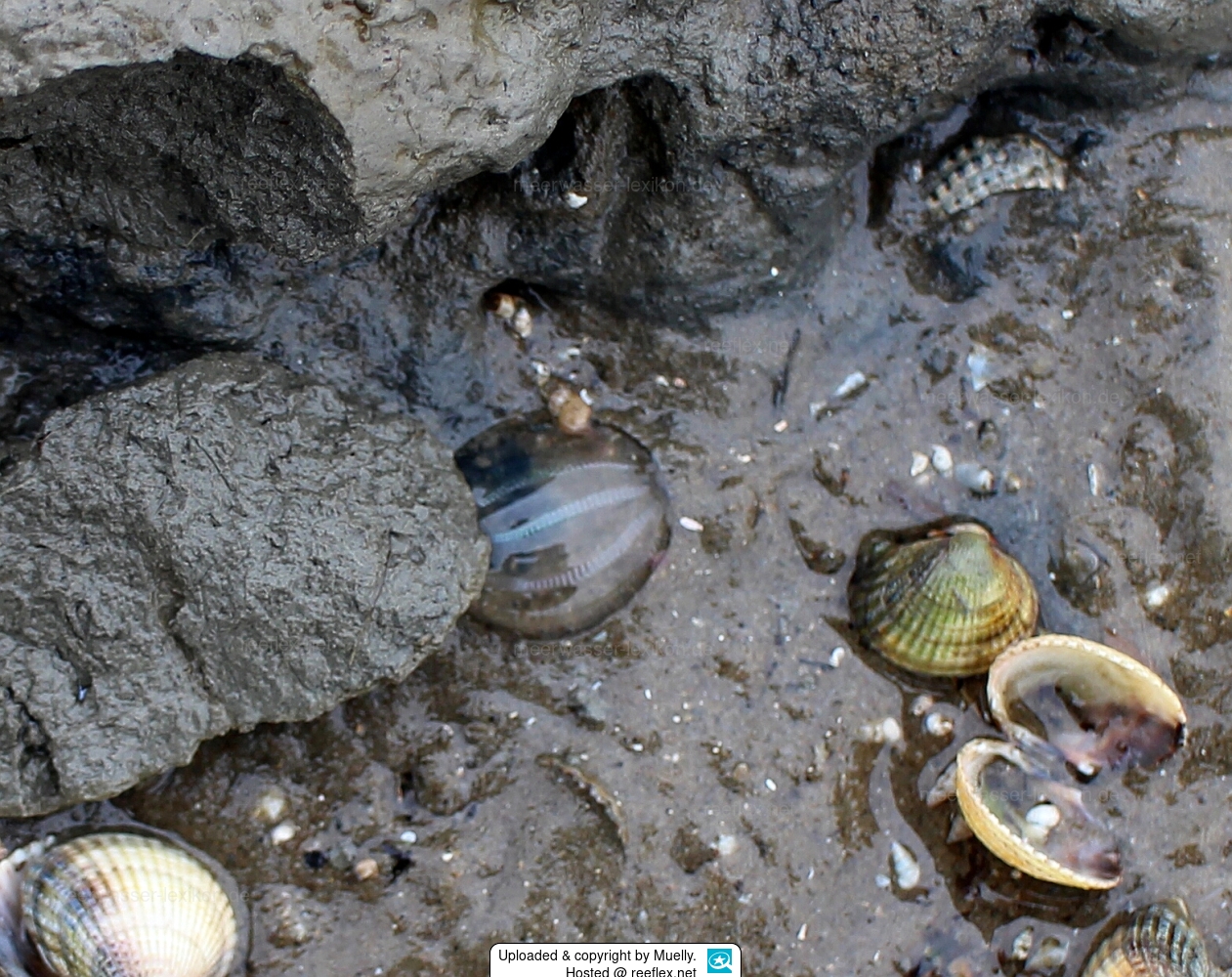Info
Pleurobrachia pileus (O. F. Müller, 1776)
Pleurobrachia pileus is a small, oval to spherical comb jelly, up to 1-2.5 cm high with two long fishing tentacles. The fishing tentacles are up to 15-20 times the length of the body (up to 50 cm long), bear lateral filaments, and can be completely retracted into the body. It swims with eight longitudinal combs, arranged in four paired rows, that give the comb jellies (ctenophores) their characteristic shimmering appearance. These combs consist of plates of transverse rows of hairs that beat in waves downwards, which produces the shimmering effect. These plates are phosphorescent at night. The gut may bear some colour. Newly hatched specimens are pear-shaped and bear only short rows of combs.
Pleurobrachia pileus is transparent ovoid to spherical body 1-2.5 cm high. Radially symmetrical with secondary bilateral symmetry. She has eight longitudinal rows of combs, arranged in four paired rows and two fishing tentacles up to 50 cm long. Lateral filaments of fishing tentacles similar.
Pleurobrachia pileus is a carnivore, preying on zooplankton, especially copepods.
Synonymised names:
Beroe hexagona (Modeer, 1790)
Beroe pileus O. F. Müller, 1776
Callianira hexagona Slabber, 1778
Callianira hexagona (Modeer, 1790)
Callianira slabberi De Haan, 1827
Callianira triploptera Lamarck, 1816
Cydippe pileus Müll. Mörch.
Pleurobrachia rhododactyla L. Agassiz, 1860
Pleurobrachia pileus is a small, oval to spherical comb jelly, up to 1-2.5 cm high with two long fishing tentacles. The fishing tentacles are up to 15-20 times the length of the body (up to 50 cm long), bear lateral filaments, and can be completely retracted into the body. It swims with eight longitudinal combs, arranged in four paired rows, that give the comb jellies (ctenophores) their characteristic shimmering appearance. These combs consist of plates of transverse rows of hairs that beat in waves downwards, which produces the shimmering effect. These plates are phosphorescent at night. The gut may bear some colour. Newly hatched specimens are pear-shaped and bear only short rows of combs.
Pleurobrachia pileus is transparent ovoid to spherical body 1-2.5 cm high. Radially symmetrical with secondary bilateral symmetry. She has eight longitudinal rows of combs, arranged in four paired rows and two fishing tentacles up to 50 cm long. Lateral filaments of fishing tentacles similar.
Pleurobrachia pileus is a carnivore, preying on zooplankton, especially copepods.
Synonymised names:
Beroe hexagona (Modeer, 1790)
Beroe pileus O. F. Müller, 1776
Callianira hexagona Slabber, 1778
Callianira hexagona (Modeer, 1790)
Callianira slabberi De Haan, 1827
Callianira triploptera Lamarck, 1816
Cydippe pileus Müll. Mörch.
Pleurobrachia rhododactyla L. Agassiz, 1860







 Muelly
Muelly





